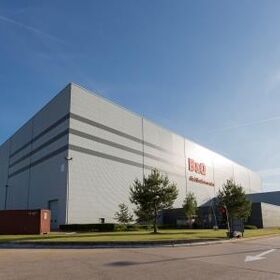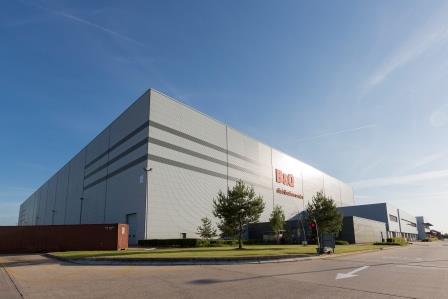Thinking inside the box
Colin Godfrey, Fund Manager of Tritax Big Box REIT, explains the property investment behind Amazon's parcel deliveries.

 What is Tritax Big Box REIT?
What is Tritax Big Box REIT?
Tritax Big Box REIT plc is a FTSE 250 listed company dedicated to investing in and actively managing large “Big Box” logistics real estate assets in the UK, land suitable for Big Box development and pre-let forward funding developments. Our assets are let to some of the biggest names in retail, logistics, consumer products and automotive, including Amazon, Morrisons, DHL, Unilever and Rolls Royce.
Since our IPO in December 2013, we’ve acquired on average one investment per month, carefully assembling a well-diversified and high-quality UK portfolio with assets that are:
- modern (over 90% built since 2000)
- large and highly sought after by occupiers (more than 90% over 300,000 sq ft, 64% over 500,000 sq ft)
- well located in key logistics locations (66% located in highly sought after South East and Midlands)
- let or pre-let on long leases, all providing for upward only rental reviews, to some of the strongest tenant covenants (over 81% of tenants are members of major stock market indices in the UK, Europe and USA)
At 31 December 2017, our portfolio was valued at £2.61 billion (up 38.1% on the 2016 financial year), with a portfolio average net initial yield since IPO of 5.7% (4.6% valuation yield at 31 December 2017).
We are committed to delivering attractive and sustainable returns for shareholders. Our core-plus strategy is supported by high-quality income which underpins our desire to deliver secure, attractive and growing dividends for our shareholders. Our target aggregate dividend is 6.7p per share for 2018 (4.7% increase over 2017) which provides a dividend yield, on the current share price, of approximately 4.5% per annum. During 2017 we delivered a profit of £248 million and a 15.2% total return, against our target of 9% per annum over the medium term.
What are we investing in at the moment?
During 2017, investor demand for Big Box logistics assets remained strong. However, we continued to exercise patience and capital discipline, acquiring 11 high quality assets for £435 million, adding seven new occupiers to the portfolio, comprising 36 tenants across 46 assets.
The company also acquired a 114-acre prime London development site at Dartford for £62.5 million, with the aim of delivering one of London’s largest Big Box logistics parks. Currently, this is the only site within the M25 that can potentially accommodate Big Box logistics assets in excess of 450,000 sq ft.
Since the beginning of January, we’ve acquired four further Big Box assets with an aggregate price of £221.6 million, increasing the portfolio to 50 assets and the weighted average unexpired lease term to 14.7 years.
In April 2018, we raised £155.6 million via a significantly oversubscribed share placing. The proceeds will enable us to fund specific acquisition opportunities under advanced negotiation, alongside several specific asset management initiatives within the existing portfolio.
How will our market develop?
Demand for Big Boxes comes from three main sources: conventional and online retailers, third party logistics companies (3PLs) and other companies such as manufacturers. They need Big Boxes to improve operational efficiency and meet the requirements of fast-evolving markets, in particular to fulfil e-commerce sales. The take-up of industrial/logistics space by online retailers has grown by 731% since 2008, as occupiers continue to build their supply chains to keep up with consumer demand.
Consequently, occupational demand is strong and outstrips the limited supply of Big Box assets. This dynamic is favourable for owners such as ourselves as it drives attractive levels of rental growth and in turn underpins investment demand, which produced yield compression during 2017.
We expect the Big Box logistics sector to continue to benefit from the structural change driven by increasing e-commerce penetration, and the operational and financial advantages they deliver to occupiers.
The fundamentals of our market are largely untouched by the current geopolitical and economic uncertainties. Brexit may further support our business, since with increased border controls our customers may require more warehousing domestically.
Low gearing (27% as at 31 December 2017), a largely fixed cost of debt and one of the lowest cost ratios with in the UK REIT market (13.1% as at 31 December 2017), applied to our high quality transparent rental income stream should contribute to earnings growth and support our progressive dividend target. We see opportunities to acquire high-quality assets and forward-funded developments to further diversify our portfolio, with a potential investment pipeline of £2.3 billion.







